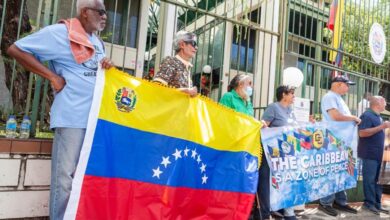Is the dollarization a viable solution for Latin America?
More than 15 years ago, Ecuador and El Salvador made the dollar the official currency of their economies

Leer en español: ¿Es la dolarización una solución viable para América Latina?
What is dollarization?
The formal dollarization of an economy consists of legalizing in a country the use of the US dollar in the economic activities of its domestic market. A measure of this kind could contemplate the use of any other currency. However, in Latin America the political and commercial influence of the United States has been decisive, which has led some countries to replace their national currency with the dollar.
Possible consequences
Various economists analyze the positive and negative implications of the radical measure; of course, both benefits and difficulties do not have the same weight in the balance. Among the advantages that it poses there are:
- Minimization of foreign exchange risk based on confidence in the currency
- Decrease in inflation levels in the medium term, after a leveling process
- Reduction of transaction costs in international trade
- Do not generate devaluation incentive foreign investment
- Adjustment of interest rates
- Greater access to international financing
- Greater fiscal discipline, since the government cannot issue money
Regarding the disadvantages, these are:
- Loss of flexibility in monetary policy due to not being able to issue money
- Dependence on indebtedness, the surplus of the trade balance and the inflow of capital
- Loss of seigniorage by the Central Bank
- The exchange rate cannot be modified to increase the competitiveness of exports in the short term
- Exposure of the country to external shocks
- There are no alternatives to cover the deficit of the national budget, nor of the trade balance without external indebtedness, which in turn justifies the privatization of state assets
Experiences in Latin America
Dollarization was the radical measure taken by the governments of two Latin American economies. Ecuador and El Salvador shared some common characteristics: dependence on a reduced number of export products, instability, and the use of the dollar for everyday transactions before the formalization of the measure. For the two countries, one of the main income is remittances from immigrants in the United States and Europe. Remittances were a key element in sustaining the new monetary system. Additionally, the United States had been exercising a strong influence in these economies and their governments had strengthened these political and military relations.
El Salvador
During the government of Francisco Flores the Monetary Integration Law was announced, which proposed bimonetarism, that is, the existence of two currencies of legal circulation, the Salvadoran colon and the US dollar. However, in 2001, this measure translated IGNORE INTO total dollarization of the economy with the circulation of colones. The decision led to a reduction in inflation in the medium term, a reduction in interest rates and the elimination of foreign exchange risk.
However, by passing on the monetary issue and due to gaps in production, labor mobility and trade exchange increase inequality. It is not possible to take advantage of exports and to be competitive and maintaining profit margins. Therefore, countries are forced to reduce costs and wages. In addition, the measure caused a decrease in the quoted value of pension funds, affecting the savings of workers. After nearly 20 years of dollarization, it is questioned that the productive matrix of El Salvador has changed so little, presenting low productivity, high levels of imports, and an export sector lagging behind and hit by the global market crisis.
Current figures
The Economic Commission for Latin America (ECLAC) estimated an average growth of 2.5% of El Salvador's Gross Domestic Product (GDP) in 2018. According to this agency, although the country will maintain levels of growth similar to the last seven years, El Salvador is the country that will least grow compared to the rest of the Central American region.
Ecuador
On January 9, 2000, President Jamil Mahuad, going through a great political, economic and inflationary crisis, announced the dollarization of the Ecuadorian economy. As a result, the South American country managed to stop the inflationary spiral that it had been presenting and the political elites succeeded in imposing a supra-devalued exchange rate of 25,000 sucres to the dollar. This caused a price adjustment between 120% and 140% to reach a parity with international prices. Also, the sectors that imposed the measure took the opportunity to change their income in dollars with an advantage, while the rest of the population saw their savings in sucres disappear, which weakened consumption.
Current figures
In its projections of economic growth, ECLAC estimates that Ecuador will grow 1.3% in 2018.
In order to weigh the consequences of any macroeconomic impact measure, it is necessary to carefully consider the reality of each country. However, there are those who also argue that in a scenario of opening markets in the region, to new alliances with economic communities such as the BRICS, dollarization only strengthens the political and military influence of the United States. Latin America has great growth potential and continues to push to overcome the enormous social inequalities. The countries of the region seek stable and peaceful ways in an increasingly globalized and multipolar world.
Latin American Post | Kristel Velazquez
Translated from “ ¿Es la dolarización una solución viable para América Latina?”





